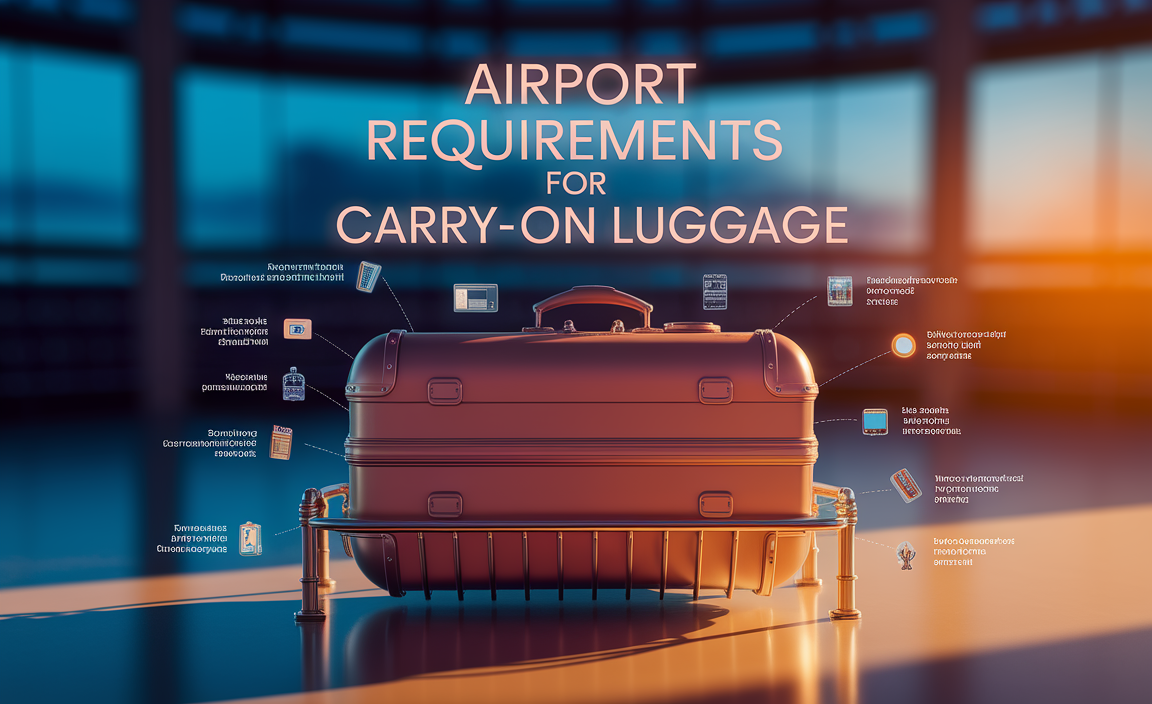Planning a quick trip to Bolivia? This 4-day itinerary focuses on the heart of the country, giving you a taste of its unique culture, stunning landscapes, and vibrant cities. We’ll cover a popular route that balances iconic sights with manageable travel times, perfect for a short but unforgettable adventure. Get ready for an adventure that’s both exciting and stress-free!
4 Days in Bolivia: An Unforgettable Journey for Beginners
So, you’ve got just four days to explore Bolivia? It might seem like a short time for such a vast and diverse country, but don’t worry! We’ve crafted an itinerary that maximizes your experience, focusing on areas that are both accessible and incredibly rewarding for first-time visitors.
This plan is designed to give you a rich cultural immersion and breathtaking natural beauty without feeling rushed. We’ll guide you through thrilling sights, delicious food, and practical tips to ensure your trip is comfortable and memorable. Let’s dive into how you can make the most of your brief but brilliant Bolivian escapade!
Why a 4-Day Bolivia Trip is Perfect for a Taste of Adventure
Bolivia is a land of incredible contrasts, from the soaring Andes mountains to the vast Amazon basin. While you could spend months exploring its wonders, a four-day trip is ideal for a focused introduction. It’s perfect for those who have limited vacation time but still crave an in-depth cultural experience.
This itinerary is designed to hit some of the country’s most iconic and accessible highlights, ensuring you get a real feel for Bolivia without spending all your time in transit. We’ll navigate this journey with your comfort and convenience in mind, making sure you can enjoy every moment.
Understanding Bolivia’s Geography for Your Short Trip
When planning a trip to Bolivia, understanding its unique geography is key, especially for a short itinerary. Bolivia is landlocked and characterized by three main regions: the Altiplano (high-altitude Andean plateau), the Yungas (subtropical mountain region), and the Amazon lowlands.
For a four-day trip, focusing on one or two of these distinct regions is most practical to minimize travel time and maximize your experience. The Altiplano, home to cities like La Paz and Sucre, and the edge of the Salar de Uyuni, are typically the most accessible and offer a dense concentration of major attractions. Altitude sickness is a significant consideration, so our itinerary will include advice on acclimatization.
For instance, La Paz, the administrative capital and the highest capital city in the world, is situated in a dramatic canyon on the Altiplano. Its altitude can be challenging, but its proximity to other key attractions and its unique cultural offerings make it a must-visit, even for a short trip.
Sucre, the constitutional capital, offers a more relaxed, colonial atmosphere perched at a slightly lower altitude, making it ideal for those concerned about the highlands. The Salar de Uyuni, the world’s largest salt flat, is another iconic destination that, while requiring more travel, can be incorporated into a tightly planned itinerary. We’ll focus on a route that brings you to the heart of the Altiplano for this guide.
Your Essential Bolivia 4-Day Itinerary: The Altiplano Adventure
This itinerary is designed for travelers flying into La Paz (LPB) and focuses on exploring the vibrant city and its surroundings, with an optional day trip to the breathtaking Salar de Uyuni. Remember, this is a flexible guide; feel free to adjust based on your interests and pace.
Day 1: Arrival in La Paz & City Exploration
Welcome to La Paz! Upon arrival at El Alto International Airport (LPB), you’ll immediately feel the altitude (around 4,000 meters or 13,000 feet). It’s crucial to take it easy today. Hydrate well, avoid alcohol, and eat lightly.
Morning: Arrival and Acclimatization
- Arrive at La Paz Airport (LPB).
- Arrange your transfer to your hotel in the city center (Zona Sur or Sopocachi are popular, slightly less prone to severe altitude effects than El Alto itself).
- Check into your hotel and rest for a few hours. Drink plenty of water or coca tea, which is traditionally used to help with altitude sickness.
For those who find themselves particularly sensitive to altitude, consider packing over-the-counter altitude sickness medication or discussing options with your doctor before your trip. Comfort is key to enjoying your adventure, and managing altitude is a significant part of that.
Afternoon: Exploring the Witches’ Market and San Francisco Square
- Once you feel a bit more settled, take a gentle stroll to the famous Witches’ Market (Mercado de las Brujas) in the Sagárnaga Street area.
- Here, you can find traditional artisanal crafts, textiles, and intriguing items like llama fetuses, which are believed to bring good luck when buried under new homes.
- Continue to the impressive San Francisco Basilica, a grand colonial church bordering the lively San Francisco Square.
Evening: Teleférico Ride and Dinner
- Experience La Paz from above with a ride on its extensive public teleférico (cable car) system. The Red and Yellow lines offer stunning panoramic views of the city nestled in the canyon.
- Enjoy dinner at a local restaurant. Try a hearty Bolivian stew like “Picante de Pollo” or “Sajta de Pollo” to warm up.
Essential Tip: When using public transport like the teleférico, keep an eye on your belongings. While generally safe, it’s always wise to be mindful in crowded areas.
Day 2: La Paz Cultural Immersion & Valle de la Luna
Today, delve deeper into La Paz’s history and natural marvels.
Morning: Museums and Historical Center
- Visit the Museo de Etnografía y Folklore to understand Bolivia’s diverse indigenous cultures.
- Explore the Jaén Street, a beautifully preserved colonial street with several small museums detailing Bolivia’s history and art.
- Walk through Plaza Murillo, the main square, surrounded by the Presidential Palace, the Congress building, and the Metropolitan Cathedral.
Afternoon: Valle de la Luna (Moon Valley)
- Head to Valle de la Luna, a surreal landscape of eroded clay and sandstone formations that resemble a lunar surface. It’s located about 10 km from the city center.
- Take a leisurely walk through the marked trails and marvel at the unique geological structures.
- You can reach Valle de la Luna by taxi or a local bus.
Evening: Sopocachi Exploration or Relax
- Consider exploring the charming bohemian neighborhood of Sopocachi, known for its art galleries, cafes, and restaurants.
- Enjoy a relaxed dinner, perhaps trying some Bolivian empanadas or anticuchos (grilled skewers).
Traveler’s Comfort Note: Depending on your comfort level with altitude, you might prefer a guided tour for the Valle de la Luna to ensure smooth transportation and guidance without expending too much energy.
Day 3: Day Trip to the Salar de Uyuni (Optional but Highly Recommended)
This is an ambitious but rewarding day trip. It requires an early start and involves significant travel, but the Salar de Uyuni is one of the world’s most spectacular natural wonders.
Option A: Full-Day Salar de Uyuni Tour (The Ambitious Choice)
- Very Early Morning: Take a domestic flight from La Paz (LPB) to Uyuni (UYU). Book this well in advance.
- Morning/Afternoon: Upon arrival in Uyuni, join a guided 4×4 tour of the Salar. Standard tours typically include:
- The Train Cemetery, where old locomotives rust in the desert.
- The Salt Flats themselves, where you can take amazing perspective photos and visit Isla Incahuasi (Fish Island) with its giant cacti.
- A visit to a salt processing plant.
- Late Afternoon/Evening: Fly back from Uyuni to La Paz.
Important Considerations for the Salar Day Trip:
- This is a long and tiring day due to the travel involved.
- Altitude in Uyuni is around 3,700 meters (12,100 feet).
- Pack sunscreen, a hat, sunglasses, and plenty of water. The sun is intense on the salt flats.
- Ensure your flight and tour bookings are confirmed.
Alternative for Comfort: Overnight in Uyuni
If a full day trip feels too rushed, an alternative for a slightly less hectic experience would be to fly to Uyuni on Day 2, spend a night in Uyuni, take a morning tour of the Salar on Day 3, and fly back to La Paz on Day 3 evening or Day 4 morning. This requires adjusting the itinerary, potentially sacrificing some La Paz exploration.
Option B: Alternative Day Trip from La Paz – Chacaltaya & Valle de las Ánimas
If the Salar is too logistically challenging for a 4-day trip, consider these closer alternatives:
- Chacaltaya: Visit the former highest ski resort in the world (now closed but offers incredible views). The altitude here is severe (over 5,000 meters/17,000 feet), so acclimatization is absolutely vital, and this is only for those who feel perfectly adapted to La Paz’s altitude.
- Valle de las Ánimas (Valley of Souls): This is another unique geological formation near La Paz, offering striking rock spires and a great hiking opportunity. It’s less affected by extreme altitude than Chacaltaya.
Day 4: Farewell to La Paz
Enjoy a final Bolivian breakfast and do some last-minute souvenir shopping before heading to the airport.
Morning: Last-Minute Souvenirs or Relaxed Brunch
- Visit local markets for any crafts or souvenirs you missed. Alpaca wool items, textiles, and ceramics are popular choices.
- Enjoy a relaxed brunch at a café in Sopocachi or the city center.
Afternoon: Departure
- Depending on your flight schedule, head to El Alto International Airport (LPB) for your departure. Allow ample time, as traffic in La Paz can be unpredictable, and you’ll need to factor in the time to ascend to the airport.
Logistics and Practical Tips for Your 4-Day Trip
Traveling to Bolivia, especially for a short trip, requires some planning. Here are essential tips to ensure your journey is smooth and comfortable.
Altitude Sickness (Soroche) Management
This is the most crucial aspect of traveling in the Bolivian highlands. Most of our itinerary is at high altitudes (La Paz is over 3,600m).
- Acclimatize Gradually: Upon arrival, rest, drink plenty of fluids (water, herbal teas like coca or muña), and avoid strenuous activity.
- Diet: Eat light meals and avoid alcohol and heavy foods.
- Medication: Consult your doctor about prescription medication for altitude sickness (like Diamox). Over-the-counter remedies can also help.
- Recognize Symptoms: Headaches, nausea, dizziness, and fatigue are common. If symptoms worsen, descend to a lower altitude.
For travelers who may need personal care assistance due to mobility issues or medical conditions, ensuring you have access to essential items like adult diapers can significantly improve comfort and reduce stress during travel, especially in high-altitude environments where quick access to facilities might be a concern.
Transportation in Bolivia
Internal travel within Bolivia can take time. For a short trip, prioritizing flights and efficient local transport is key.
- Flights: Boliviana de Aviación (BoA) and EcoJet operate domestic flights. Book in advance for better prices.
- La Paz: The Teleférico system is excellent for navigating the city. Taxis and ride-sharing apps are also available. Negotiate taxi fares before your journey or ensure the meter is used.
- Tours: For day trips like Valle de la Luna or a potential Salar de Uyuni excursion, booking with a reputable tour operator is recommended for convenience and safety.
Connectivity and Communication
Wi-Fi is generally available in hotels and cafes, but it can be spotty. Consider getting a local SIM card for easier communication and data access if needed. Bolivia uses the Bolivian Boliviano (BOB).
What to Pack: Essentials for Comfort and Preparedness
Packing smart can make a big difference, especially with varying altitudes and climates.
| Category | Essential Items |
|---|---|
| Clothing |
|
| Health & Comfort |
|
| Documents & Money |
|
| Electronics |
|
Food and Drink in Bolivia
Bolivian cuisine is hearty and flavorful, reflecting its diverse geography. Be adventurous but mindful of hygiene.
- Coca Tea: A ubiquitous remedy for altitude sickness.
- Salteñas: A type of baked empanada, often filled with meat and gravy, usually eaten as a mid-morning snack.
- Banquete Paceño: A hearty platter often found in La Paz, containing meats, potatoes, corn, and cheese.
- Llama Meat: A staple in the highlands, often served grilled or in stews.
- Api Morado: A warm, spiced purple corn drink, often served with buñuelos (fried dough).
When dining, stick to busy, reputable restaurants. Drink bottled or purified water only.
Safety in Bolivia
Bolivia is generally safe for tourists, but like any country, it’s important to exercise caution.
- Petty Theft: Be aware of your surroundings, especially in crowded markets and on public transport. Keep valuables secure.
- Scams: Be wary of unsolicited help or offers that seem too good to be true.
- Transportation: Use reputable taxi services or ride-sharing apps. Avoid flagging down unmarked cabs at night.
- Health: Beyond altitude sickness, ensure your routine vaccinations are up to date.
For more detailed safety information, it’s always a good idea to check your government’s foreign travel advice, such as the U.S. Department of State’s Country Information for Bolivia.
Frequently Asked Questions
Q1: Is 4 days enough to see Bolivia?
Four days is a short time for a country as vast as Bolivia. This itinerary focuses on a specific region, like La Paz and a day trip to Uyuni, to give you a concentrated and rewarding experience rather than trying to cover too much ground and spending most of your time traveling.
Q2: What is the best way to get around Bolivia for a short trip?
For a 4-day trip, internal flights are the most efficient way to cover longer distances, especially if considering both La Paz and Uyuni. Within cities like La Paz, the Teleférico system, taxis, and organized tours are good options.





